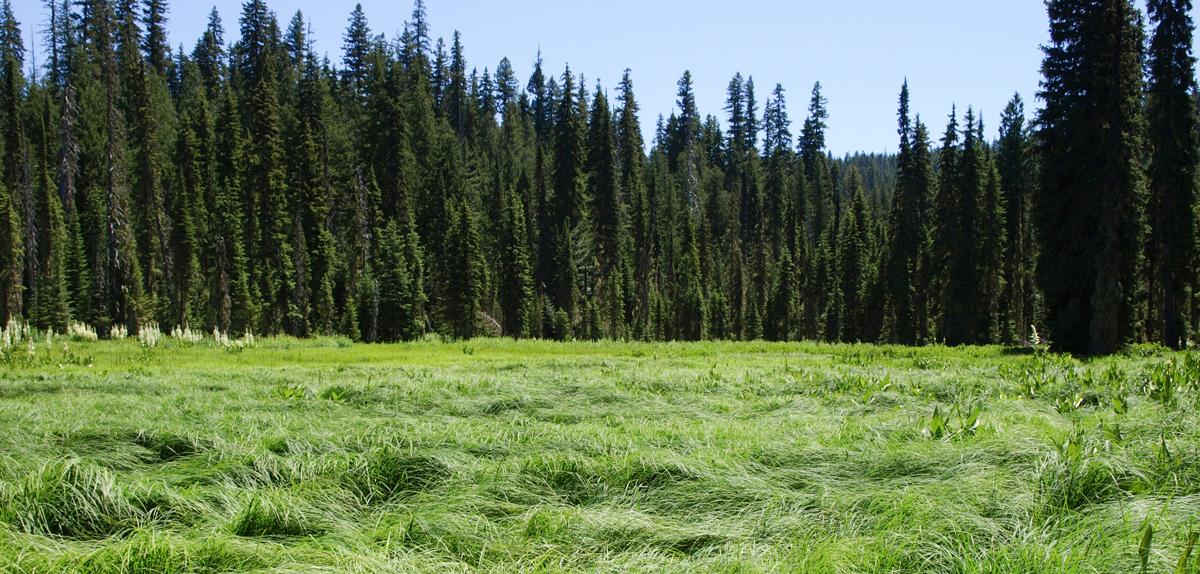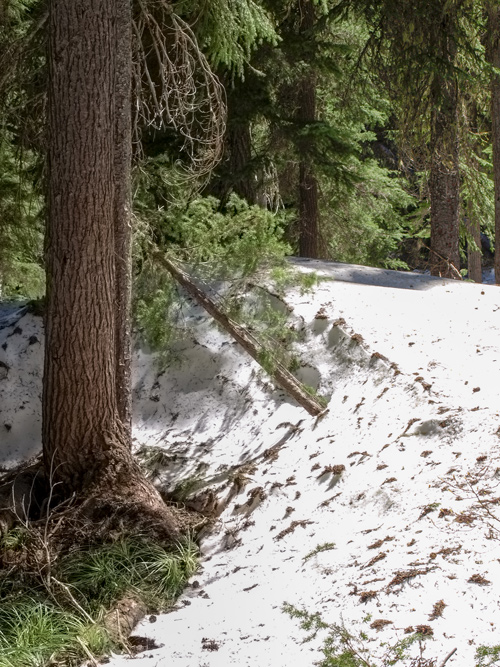At Salmon Trout Camp on the western end of the Northern Nez Perce trail, the captains consider alternative ways to cross the Rocky Mountains. Because Bitterroot Mountain snows are so deep, they decide to return to Weippe Prairie and wait for more melting.
Morale Low
by Yellowstone Public Radio[1]Originally aired weekdays by Yellowstone Public Radio during the Bicentennial observance of 2003-2006. Narrated by Hal Hansen. Scripts by Whit Hansen and Ed Jacobson. Produced by Leni Holliman. © … Continue reading
Salmon Trout Camp
© 20 June 2009 by Kristopher K. Townsend. Permission to use granted under the Creative Commons Attribution-Share Alike 4.0 International license.
Hunting and Fishing
Several hunters went out eairly a hunting. about 11 A. M. R. Fields came in had killed a Brown bear about a mile down this glade. Several men went at fishing fixed gigs of Bayonets & Indn. gigs and fixed a dip net &C. and killd and caught 7 Salmon trout towards evening Labuche [Labiche] and Cruzatte came in had killed one deer & caught one Salmon trout.—
—John Ordway
Alternate Plans
we determined to return in the morning as far as the quawmash flatts [Weippe Prairie] and indeavour to lay in another stock of meat for the mountains, our former stock being now nearly exhausted . . . . by returning to the quawmash flatts we shall sooner be informed whether or not we can procure a guide to conduct us through the mountains . . . . should we wait much longer or untill the snow desolves in such manner as to enable us to follow the road we cannot hope to reach the United States this winter
—Meriwether Lewis
Lolo Trail Snow Bank
© 9 July 2009 by Kristopher K. Townsend. Permission to use granted under the Creative Commons Attribution-Share Alike 4.0 International license.
Bitterroot Mountain Snow
the travelling in the mountains on the snow at present is very good, the snow bears the horses perfictly; it is a firm coase snow without a crust, and the horses have good foot hold without sliping much; the only dificulty is finding the road . . . . Although the snow may be stated on an average at 10 feet deep yet arround the bodies of the trees it has desolved much more than in other parts not being generally more than one or two feet deep immediately at the roots of the trees, and; of course the marks left by the rubing of the indian baggage against them is not concealed.
—Meriwether Lewis
The Southern Nez Perce Route
The Shoshones informed us when we first met with them that there was a passage across the mountains in that quarter but represented the difficulties arrising from steep high and rugged mountains and also an extensive and barren plain which was to be passed without game, as infinitely more difficult than the rout by which we came.
—Meriwether Lewis
Weather Diary
State of the weather at rise
Wind at rise
State of the weather at 4 P.M. Wind at 4 P.M. fair S E fair N W —Meriwether Lewis[2]To assist the reader of this web page, the date column is omitted and some abbreviations have been spelled out.
Notes
| ↑1 | Originally aired weekdays by Yellowstone Public Radio during the Bicentennial observance of 2003-2006. Narrated by Hal Hansen. Scripts by Whit Hansen and Ed Jacobson. Produced by Leni Holliman. © 2003 by Yellowstone Public Radio. |
|---|---|
| ↑2 | To assist the reader of this web page, the date column is omitted and some abbreviations have been spelled out. |


